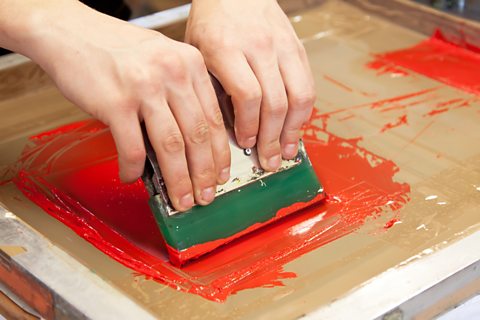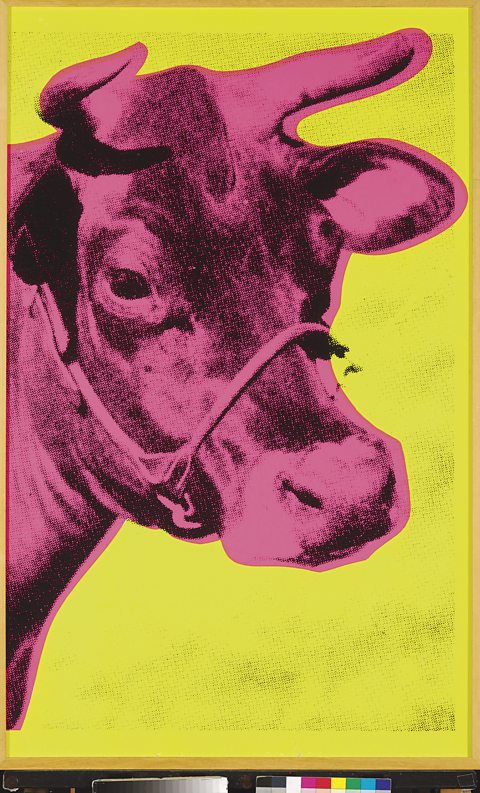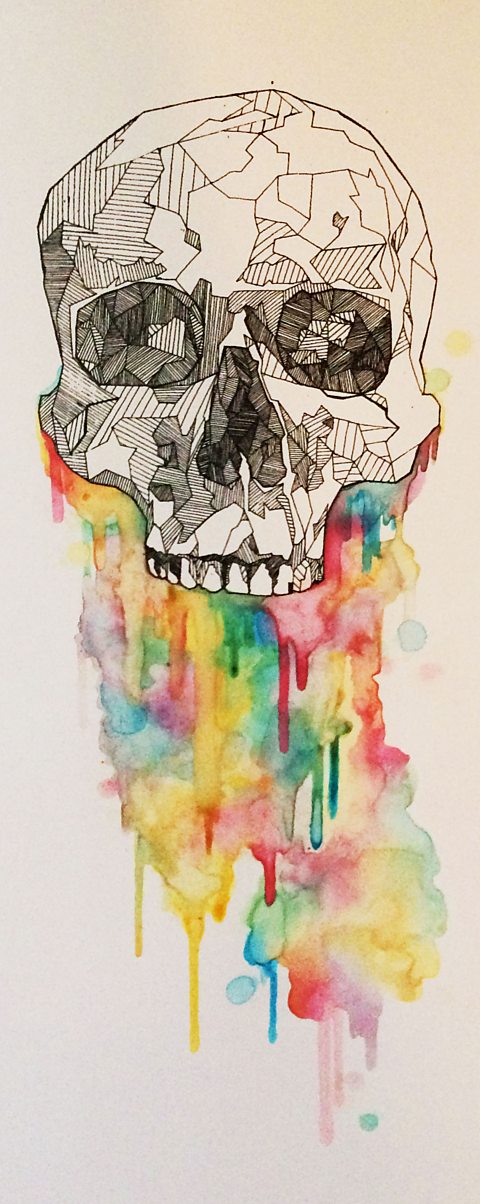Silkscreen printing



Silkscreen printing is sometimes known as the silkscreen process. A print is made using a stencilAn image cut into card or another material that can then be used to make repeated identical images or acetateA thin sheet of transparent plastic material that can be drawn on or used to make photographic film placed over a mesh cloth stretched over a heavy frame.
A stencil can be created by carefully cutting out a design from paper and then attaching it to the silkscreen.
If using acetate, you photocopy your image onto an acetate sheet. The screen is coated with a light-sensitive gel and the acetate image is exposed onto the screen using a ultra-violet light source.
The design is printed by having a squeegeeA tool with a flat rubber blade that is used in printing to spread ink evenly over a printing surface. force colour through the pores of the material in the areas that are not blocked out by the stencil.
Silkscreen prints are usually made with acrylic paint that is mixed with a binderA material mixed with pigments or inks to improve their flow and to help them fix onto the printing surface to allow the colour to flow easily through the pores and to fix the design.
The most successful silkscreen prints use bold, simple shapes and designs with limited colours. Andy Warhol's Cow (F. & S. II.11) is a good example of this.
Uses
Silkscreen printing is used in many different art and design areas, such as:
- fine art prints
- posters
- textiles (fabric, t-shirts)
- interiors (wallpapers, curtains)
Silkscreen printing is used for small to medium 'runs' of prints. This process can be quite time consuming as it is done manually.
It is good to keep in mind the challenges of this process:
- you must ensure the image is lined up and consistently positioned each time
- you should work from the lightest colour and smallest area to the largest and darkest to avoid colours running or bleeding